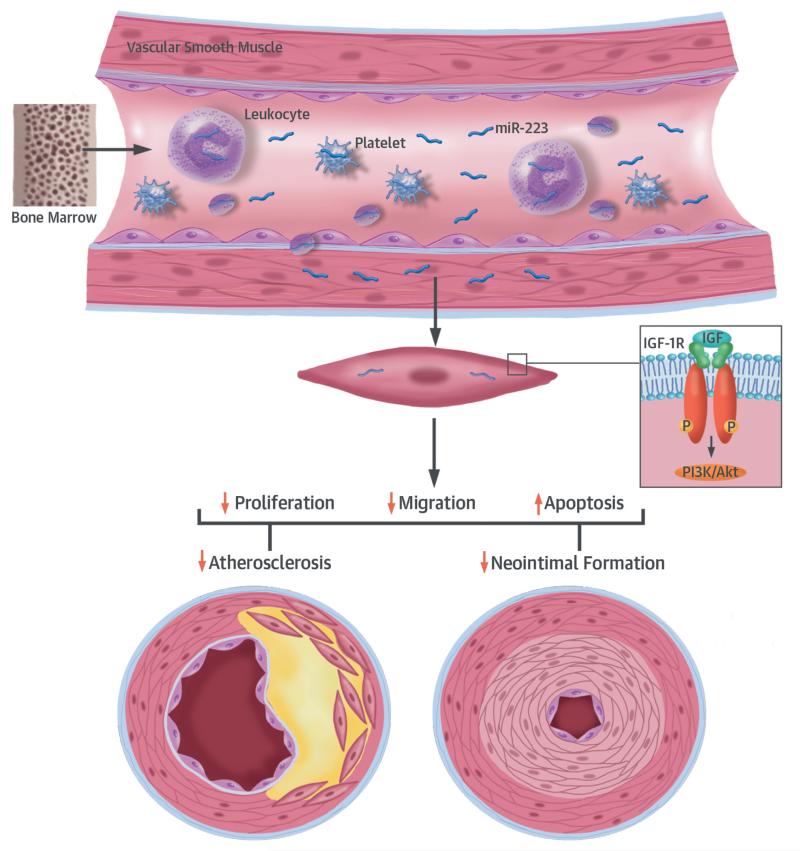CENTRAL ILLUSTRATION. Blood Cell-Secreted miR-223 in Atherosclerotic Vascular Disease.
Inflammatory blood cells, such as leukocytes and platelets, which are originally from hematopoietic cells in bone marrow, can secrete the hematopoietic lineage, cell-specific micro-ribonucleic acid (miR)-223 into circulating serum. This miR-223 can then enter vascular cells (e.g., vascular smooth muscle cells [VSMCs] and vascular walls) and work as a novel endocrine genetic signal (like a hormone) in VSMCs to regulate their biological functions, such as proliferation, migration, and apoptosis via target genes such as insulin-like growth factor 1 receptor (IGF-1R) and the P13K-Akt pathway. Under pathological conditions, such as atherosclerosis and vascular injury, blood cells release more miR-223, which results in increased levels of miR-223 in VSMCs and vascular walls. The increased miR-223 helps protect against atherosclerotic vascular disease (vascular neointimal formation and atherosclerosis). P = phosphate.

